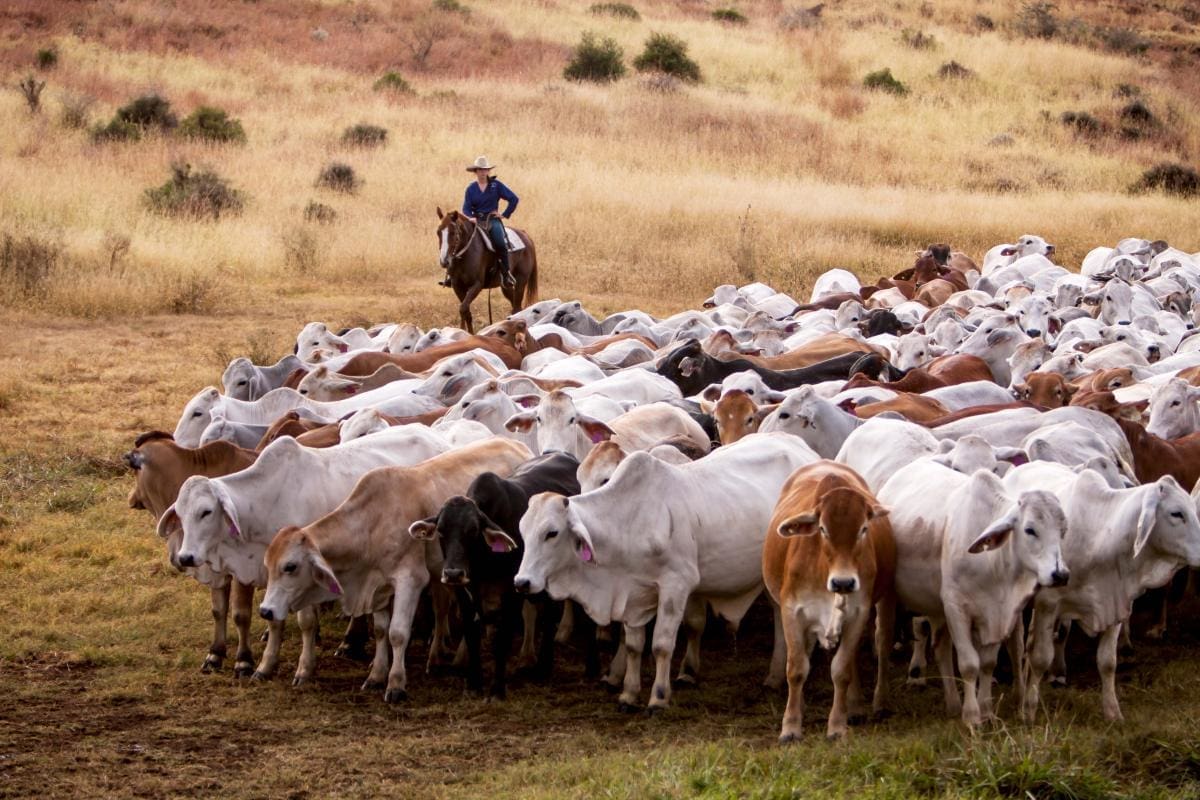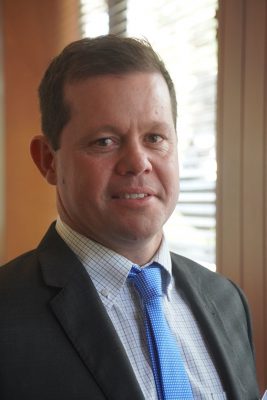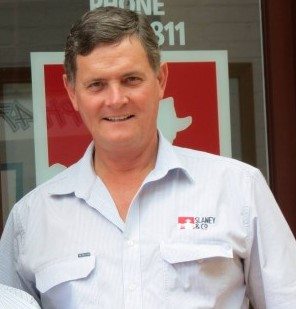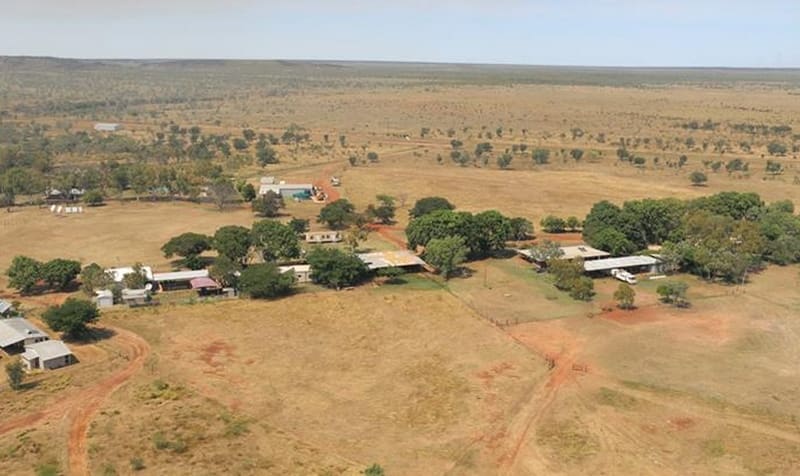
In April 2019, after two successive poor seasons on Barkly cattle properties, Alroy Downs and Dalmore Downs, NT grazier Sterling Buntine purchased the 23,000ha Comely and Mapala Stations in Central Queensland, on a walk-in walk-out basis without cattle for a reported $50m.
ARE current record high cattle prices a real hindrance in selling unstocked or significantly understocked grazing properties?
With the Eastern Young Cattle Indictor recently hitting a new record high of 772c/kg and cows and calves nationally averaging $2653 on AuctionsPlus on Friday, the current challenges of stocking a bare property acquisition are obvious.
A valuer’s perspective
Toowoomba-based Herron Todd White valuer Stephen Cameron suggested that despite the current market for cattle, there was no ‘black and white, right or wrong’, when it comes to the potential benefits of selling a property with or without livestock.

Stephen Cameron HTW
“At the end of a day, it is all about individual preference. It depends on a buyer’s business model and the reason behind the build-up – is it to acquire country only, or is there the need to retain livestock?”
Mr Cameron said a number of factors came into the equation including the scale of the asset, its location, the purchaser, the season and the availability of suitable cattle.
“Depending on the ability of a purchaser to restock, larger grazing holdings generally in the Northern Territory or North Queensland with significant carrying capacities are usually more attractive if they are offered on a walk-in walk-out basis,” he said.
However in the southern and western Queensland markets, properties were more commonly sold on a bare basis.
“The ability to restock smaller holdings is not as much of an issue, because producers are typically chasing grass, expanding, or are diversifying their business – such as breeder or finishing country to complement an existing asset portfolio,” Mr Cameron said.
“In this region, transactions including livestock aren’t that common. The inclusion of stock is sometimes negotiated in an off-market transaction,” he said.
Mr Cameron said whether a property was more attractive bare or stocked also depends on the purchaser.
He offered two scenarios:
BARE – Those seeking grass or expansion. These producers may not wish to take on cattle that fail to suit the breed, bloodlines or genetics they are associated with. They wish to walk onto the property with their own stock.
WIWO – Those who are keen to build up their herds. These producers avoid having to source stock, pay potentially high to extreme values, plus additional costs and associated cartage. This transaction is usually mutually beneficial for both parties.”
Mr Cameron said cattle availability could also be a determining factor.
“If a buyer has to purchase to restock a property, what do they need to pay, and is it the right season or market to purchase cattle? Some vendors offer incentives such as livestock because it means an interested party can walk straight onto a turn-key operation.”
North Queensland
Henry Slaney from Charters Towers-based Slaney & Co believes selling a substantial breeding property without stock could be problematic for some buyers at present.
However, he explained that there were often producers who had an established breeder herd and were seeking a fattening place or a north western downs property without stock.
“Very often, Mitchell grass downs or fattening country offered to the market is bare of livestock. As long as it presents with a good body of feed, that property will sell, because the buyers typically already have cattle to stock it.”

Henry Slaney
Mr Slaney said capacity could be a factor: enterprises with a carrying capacity of more than 1000 breeders could face reduced buyer interest, being capable of stocking that bare property.
“Smaller properties can source 500 to 1000 cows. The bigger the property, the bigger the problem. Not only does the buyer need to source the cattle, they need to ensure they are acclimatised as well.”
Mr Slaney believes it would be difficult for some buyers currently to raise funds to purchase a large northern breeding operation being sold bare of livestock.
“It might be difficult to convince banks they could service the borrowing with high land and cattle prices. Most large North Queensland breeding operations (carrying more than 5000 head) would need to offer some stock to enable prospective purchasers the possibility of obtaining additional finances.”
Despite the prohibitive price of purchasing breeding cattle to restock at present, Mr Slaney said properties being offered bare were not being discounted, as a result.
“It is definitely a seller’s market at present and so, the concept of discounting any place, isn’t happening. If land is making a $300/ha on a bare basis, prospective buyers would still be looking to pay that $300/ha benchmark. However, that property may present a challenge for someone who was unable to stock it.”
South Queensland
Wallumbilla cattle breeding property Forest Grove, in Southern Queensland’s Maranoa region, was recently sold bare to a South Australian cattle producer with an existing supply chain who plans to stock it with his own weaners and cull cows.
The 3384ha operation had been destocked since late last year and was boasting an excellent body of feed following recent February March rain and recovery from drought conditions.
Phillip Kelly from Colliers International said most of southern Queensland’s sales were conducted on a bare basis.
“Up until now, we haven’t had any trouble moving those properties. However, the strength of the cattle market and accessing suitable types could influence sales during the winter months,” he said.
“Prices for bare properties may plateau or become difficult to move, especially if a reasonable volume of cattle grazing operations are listed.”
Mr Kelly said stocking a newly acquired bare property was usually expensive.
“Using Forest Grove as an example, if a producer purchased it as an additional block and had to buy 300 to 400 breeders to stock it, that is potentially just short of another $1 million on top of the property price.”
He said some producers did not have the spare cattle or the finances to stock their newly acquired blocks.
“Those who have taken up the advantage of expanding are now wondering how to stock their new block given their existing holdings are also severely understocked.”
Mr Kelly said these vendors may need to find some alternate income sources.
“Producers chasing grass are seeking short-term livestock leasing opportunities, so the new owners could take on agistment cattle or lease a block out for 12 months and wait for the current cattle market to settle down.”
He believes vendors should position themselves within the season and provide an incentive to prospective buyers – giving serious consideration to negotiating deals including livestock, where possible.
Northern Territory
Andy Gray from Territory Rural believes most buyers who purchase bare properties in the Northern Territory, with a significant carrying capacity, already have cattle on their existing holdings.
“The run of dry seasonal conditions has forced those with capacity to purchase well-grassed properties for stocking with their own cattle, which means they don’t have to offload livestock,” he said.
In April 2019, after two successive poor seasons on Barkly cattle properties, Alroy Downs and Dalmore Downs, NT grazier Sterling Buntine purchased the 23,000ha Comely and Mapala Stations in Central Queensland, on a walk-in walk-out basis without cattle for a reported $50 million. Around the same time, he secured Mimong Station in north west Queensland for around $20 million. Cattle from his NT holdings were relocated.
Bare NT properties currently listed for sale include:
- Kiana, a 3318sq km holding just above Cresswell Downs on the northern extremity of the Barkly, owned by Indonesian-based Oceanic Cattle Co. It sold most of its cattle herd to AA Co in 2012 and is being sold on a bare basis for around $14 million by Rawdon Briggs from Colliers International.
- Pine Creek’s 67,692ha Claravale Station (being marketed by Alison Ross, Elders Katherine) is being offered with just 230 head of cattle. The property is likely to sell to a producer seeking a depot, due to its proximity to Darwin.

Kiana, a 3318sq km holding on the northern edge of the Barkly Tableland is being offered on a bare basis for around $14 million through Rawdon Briggs from Colliers International.
Sales activity shows country in the Northern Territory has been purchased and also leased for grass.
Mr Gray said there is evidence of two markets in the NT:
- Producers who have purchased or leased country to feed their existing cattle
- Producers seeking to expand or replace breeders within existing herds are looking to source breeders.
In May 2019, Consolidated Pastoral Co sold its 379,000ha Manbulloo Station near Katherine to the Argentinian Buratovich family for around $25 million, in a sale and leaseback deal. Katherine Downs was also purchased by the Buratovich family and leased to CPC.
In 2016, the Harris family bought Benmara Station on the NT’s Barkly Tablelands, a 450,000ha property with an estimated carrying capacity of 20,000 head of cattle. A price of $12 million was suggested at the time.
On the other hand, Mr Gray said producers who are buying a lightly-stocked or unstocked property, and who don’t have cattle, are facing increased market pressure with agents reporting strong breeder demand.
Two successive poor wet seasons has reduced feed reserves in the NT with many producers actively managing their feed resources.
Mr Gray said agistment country had been difficult to source across vast areas of Australia due to the ongoing effects of the drought.
“Rain allows for partial restocking until a property recovers and normal seasons re-commence. In the meantime, properties that have been lightly stocked or unstocked during the dry seasonal conditions and that are now boasting a good body of feed are firmly in the sights of those who have cattle.”
North Western New South Wales
Greg Seiler from Nutrien Harcourts Bourke said securing a property with livestock was convenient for most prospective buyers.
“Interested parties may be deterred from purchasing a corporate, large-scale grazing operation that is being offered bare, because of the sheer volume of cattle needed to restock that enterprise.”
He said stocking a bare property was a big consideration for many family farmers or operators.
“It can comprise a huge chunk of the investment capital. As a result, many producers put themselves in a position where they have some surplus livestock, so when they purchase a property, they can immediately truck stock there.”
Mr Seiler said conversely, there were some producers who had their own livestock and need land for expansion.
“These people might have stock on agistment or are leasing country and are looking to grow into their operation. In this case, the inclusion of stock in the sale deal would be a deterrent.”
He said whatever the option – bare or stocked – the cost of livestock was usually rolled into a property transaction.
“Someone purchasing a stocked property is paying commercial rates for the livestock – the vendor isn’t giving anything away. The price reflects whether a purchaser has paid for livestock or whether they will procure them from outside the transaction.”

For purpose of clarity, a ‘WIWO’ sale of a grazing or farming property implies a Going-Concern, with ‘all things necessary’ from an operational perspective … Comely and Mapala, if purchased on a Bare basis, were simply sold ‘as is, where is’, with a list of Plant & Equipment, if those things were ‘given-in’ …
The WIWO classification is the capital value of the Enterprise [including land-as-factory (bare, but improved), the Livestock, and the Plant and Equipment)]; and if not fully-stocked, it might be valued on a Bare basis as the capital value of the factory, plus Stock and ‘Tools’ … and a ‘bang-tail’ muster.
Just because a property has grass and water today doesn’t mean it’s as productive into perpetuity/infinity. Also, big northern holdings with a large carrying capacity does necessarily make these titles ‘better’ or ‘worse’ as a proposition. One must look at the granularity of breaking factors of production down to their smallest unit of comparison; and look at trends and sustainability.
Price is not Value … those two friends parted company years ago.
If one is prudent, may I suggest the long-term cash-flows tell the story and enterprise value (EV) on a Net Present Value (NPV) basis of Free Cash Flow of the Firm (FCFf) and using a Terminal Value with WACC as the discount-rate, may give a vendor/investor a solid picture of what the Total Asset Value should look like to achieve that level of projected cash-flows.
In your 10-year cash-flow planning projections and budgets of expected outcomes … remove a year of revenue for drought-effects, and another for industry effects … of course the costs remain. How are we looking now?
On a ‘risk and return’ basis, the Equity Risk will be higher than late-stage venture capital which might be around 15.5% (implying a payback of around 6-years cash-flows). Blackall-Tambo might have an Equity Risk factor of around 21% and Longreach-Winton might be around 25% just to give an idea. Of course, the weighted average cost of capital (WACC) for both Equity Capital and Debt Capital as a combination, should make the WACC lower … maybe to around 17% and 20% respectively, if the cost of debt was around 8% pa.
These WACC’s imply (via inversion) an Operating Profit (or EBIT) multiple of around 6-times and 5-times earnings before interest and tax respectively, to calculate a fair investment value.
And of course, ROIC must be greater than WACC for the term the asset is held.
These are the important things to get your head around; the cost of capital and the risk to capital; and the concept of Operating Profit after-tax being the amount left over to pay Debt, Dividends, and CapEx.
Yes, interest rates may stay low for a while but under the current and highly manipulated central-bank policy settings, there is no true price-discovery of asset-values. Meaning it’s a ‘rigged-game’ … interest rates will bounce off the bottom eventually and you might take that possibility into consideration.
IMO